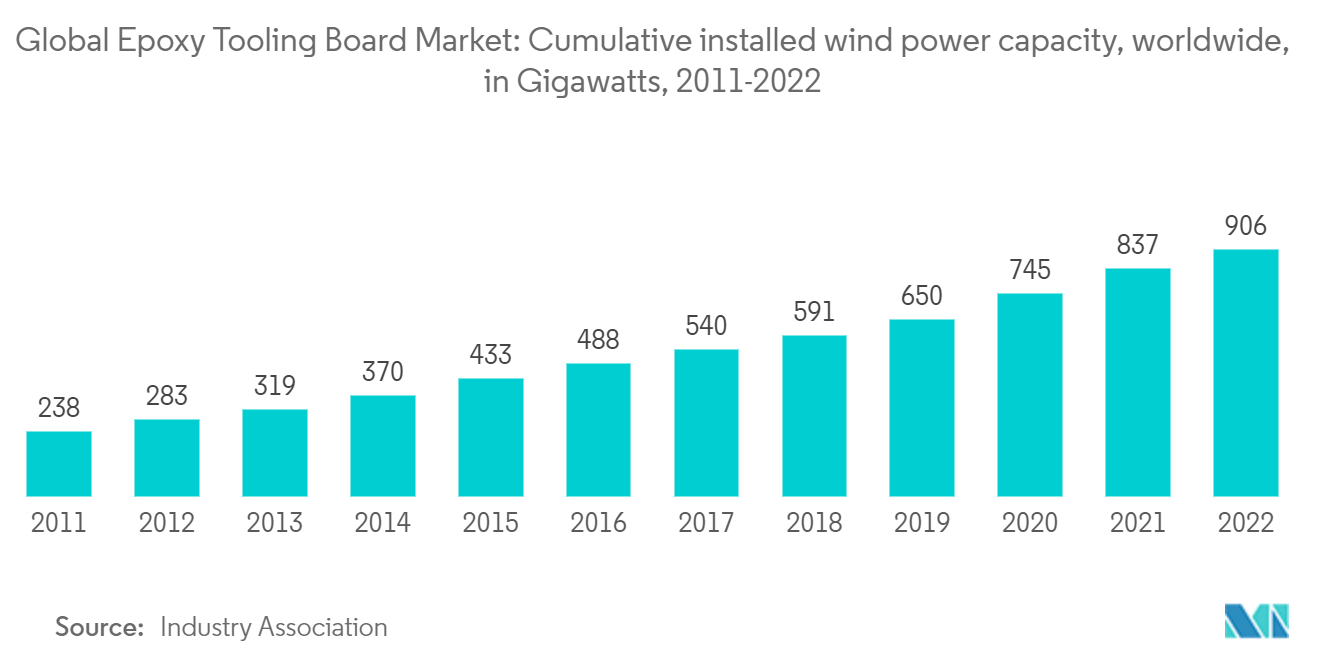Market Trends of Global Epoxy Tooling Board Industry
Use of Epoxy Tooling Board in Wind Blade Manufacturing has Increased
The market for epoxy tooling boards is growing because more and more wind turbine blades are being made with epoxy resins. Epoxy tooling boards are being made by manufacturers for wind turbines to make it easier to make modules, models, and tools. Also, as large wind turbines become more common, epoxy resins are quickly replacing polyester as the matrix of wind blade composites. This is because epoxy resins are better than polyester resins in many ways. Epoxy tooling board is used for making prototypes for various end-use industries. Manufacturers are focusing on offering wind blade molds with quality, better dimensional control, and at an affordable rate. Recently, there has been a rise in demand for tooling boards, and hence, a few companies are developing a wide variety of tooling boards with various densities that are suitable for designing models, prototypes, and production fixtures. Companies are also developing large-size and smooth-surface epoxy tooling boards to make them compatible with standard epoxy adhesives.
In 2021, the total amount of wind power installed around the world was about 837 gigawatts. Most of the wind power capacity that year, about 780 gigawatts, came from onshore wind farms. The largest wind power market in the world is China, with a capacity of over 237 gigawatts of installed wind power. China has a large land mass and a long coastline, which makes it a great place for wind power. At first, China set ambitious goals for adding offshore wind capacity. However, offshore development has moved slower than expected because many domestic turbine manufacturers lack experience.

Rising in Development of Prototype for Race Cars, Aerospace, and Motorsports Vehicles
Tooling boards are great for making prototypes, but they are also used in the aerospace and automotive industries for vacuum forming, machining, prepreg composite layup tools, pattern making, high-temperature curing prepreg, and other limited-run tooling applications. The use of 3D printing has increased in recent years. Epoxy tooling boards are used on a large scale in developing prototypes for race cars, vehicles used in motorsports, and in the aerospace industry. Lightweight and more economical than aluminum and steel have increased the popularity of epoxy tooling boards across industries. Rapid prototyping is gaining traction across the automotive and aerospace industries to simplify and shorten the product development cycle while also improving cost efficiency. Hence, there is a growing demand for epoxy tool boards offering rapid tooling techniques. Manufacturers in the aerospace and automotive industries are focusing on prototypes throughout the process with epoxy molds as these are fast, as compared to machine molds, and they are also creating an inexpensive way to create a prototype in the aerospace and automotive industries. Due to the strict regulations by governments, manufacturers are focusing on lightweight aircraft and testing models created using tooling boards, which is driving the demand for epoxy tooling boards while offering a low-cost solution and quick mold preparation.


